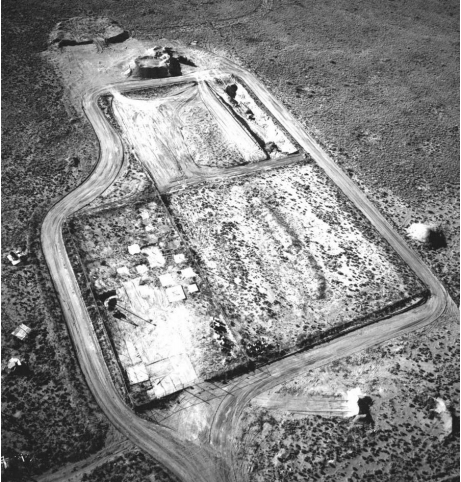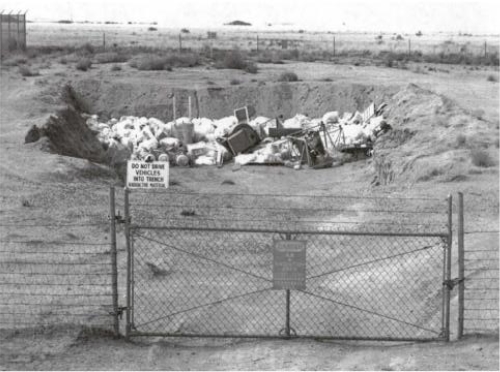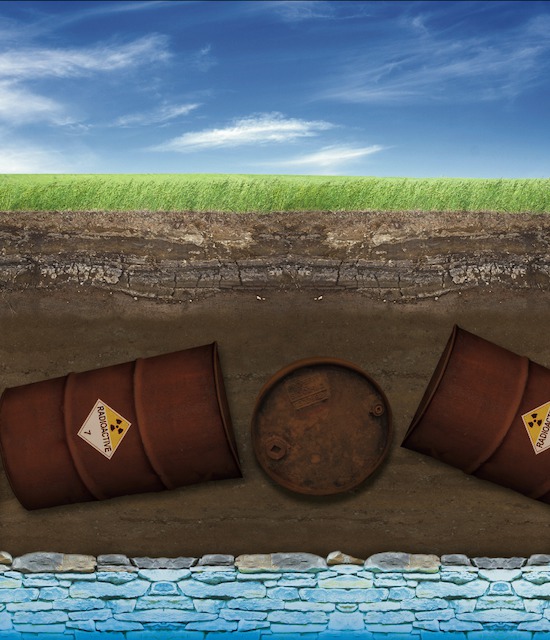In March of 1979, mechanical failure and human error contributed to a reactor meltdown at Pennsylvania’s Three Mile Island nuclear plant. The meltdown raised alarm at the Nuclear Regulatory Commission about the risk of meltdown at other nuclear reactors. What were the threats to nuclear safety, and how could we plan for them? The NRC asked Albuquerque’s Sandia National Laboratories to answer this question. So commercial nuclear plants all over the world sent enriched uranium to Sandia, where scientists triggered dozens of nuclear meltdowns by irradiating the fuel at temperatures greater than 4,000 degrees Fahrenheit in its Annular Core Research Reactor.They collected data from these meltdowns, while high-speed cameras recorded the progress. The experiments contributed to the creation of fail-safe computer codes based on various worst-case scenarios. Nuclear reactors worldwide reprogrammed their computers based on these codes.These were real nuclear meltdowns that produced dangerous nuclear wastes. The only safe storage option for such wastes would have been in a specially engineered facility, but no such option existed at the time. Instead the NRC allowed Sandia to bury dozens of radioactive canisters full of meltdown material in vertical holes drilled into shallow, unlined trenches in its 2.6-acre Sandia Mixed Waste Landfill (MWL). The dump opened in 1959 and for nearly 30 years, until it closed in 1988, received as much as 1.5 million cubic feet of radioactive and toxic material. Into open pits near the Pueblo of Isleta, Sandia dumped carcinogenic solvents such as tetrachloroethylene (PCE), trichloroethelyene (TCE) and dichlorodifluoromethane (CFC-12). Into unlined trenches a few hundred feet above the aquifer, it dumped metals like beryllium, cadmium, chromium, nickel and 281,000 pounds of lead. In the middle of it all, it buried tons of various radioactive elements, including more than 100 drums of plutonium, which has a radioactive half-life of 24,100 years. Sandia received and studied radioactive material from various US nuclear test sites and proving grounds. All of it found its way into the landfill: weapons components contaminated by depleted uranium from the Nevada Test Site, where the US exploded nearly 1,000 nuclear bombs; radioactive residue from the Marshall Islands’ missile range where the US tested the MX, Minuteman and Trident nuclear missiles; and seven 55-gallon drums of contaminated material from Three Mile Island.Some material was landfilled in steel drums, but tons of material was tossed into the landfill in plastic bags or cardboard boxes. In 1967 the Lab turned MWL into a toxic-radioactive stew when it poured 271,000 gallons of reactor coolant water into the landfill. It’s a flammable stew too; in 1974 the depleted uranium caught fire. When Sandia finally closed the landfill, the Resource Conservation and Recovery Act (RCRA) gave the New Mexico Environment Department (NMED) the authority to force Sandia to clean up the site and monitor it for contamination. While a network of groundwater-monitoring wells was installed to the north, west and southeast of the landfill, a 1993 NMED study revealed that they were placed in the wrong locations. While surface water moved to the northwest, groundwater traveled to the southwest. One of the wells recorded elevated levels of chromium, cadmium and nickel contamination to the northwest of the landfill. Sandia claimed they came from corrosion at the site of the well, not from the landfill, despite the fact that no other wells exhibited similar corrosion. Field investigations in 1994 found elevated levels of volatile organic compounds (VOCs) and tritium in sub-surface soils. Sandia downplayed any concern, concluding, despite subsequent evidence to the contrary, that the material would decay before ever reaching groundwater.Despite RCRA disclosure requirements, none of these troubling issues—the elevated tritium levels in soils, the nickel contamination in groundwater, the misplaced network of monitoring wells—were presented to the community in a 2004 public meeting. Even with the evidence of soil and groundwater contamination withheld, public testimony overwhelmingly favored excavating the landfill. But in April of 2005, despite a federal law that prohibits the burial of plutonium-contaminated waste in shallow, unlined pits covered in dirt, NMED ordered Sandia to bury the waste in shallow, unlined pits covered in dirt. Though the permit requires it, Sandia has not completed an excavation and removal feasibility study. But just last month NMED issued Sandia conditional approval for a Certificate of Completion for its permit. Such a permit would allow Sandia to permanently store high-level nuclear waste, mixed with carcinogens and volatile compounds, in unlined trenches covered in dirt. If such a landfill were proposed today, it would violate every state and federal law governing the regulation of radioactive and toxic waste management. Dozens of Sandia representatives attended a public meeting on the permit held last week at the Manzano Mesa Multigenerational Center in Albuquerque. Dave McCoy, director of Citizen Action New Mexico, was there. McCoy has been a tough critic of Sandia’s plan to keep high-level nuclear wastes onsite. During the meeting he asked Sandia engineer John Cochrane about the elevated levels of toluene, tritium and nickel in soils and groundwater. Cochrane dismissed these issues as unrelated to the landfill. I asked Cochrane how he could be so confident that the toxic and radioactive wastes have never and would not in the future contaminate groundwater. “These are unlined pits holding high-level nuclear wastes, after all.” He paused to consider the question and then said, “I know. It feels wrong.”Eric Nuttall, emeritus professor of Chemical & Nuclear Engineering at the University of New Mexico and an expert on in situ remediation of groundwater, thinks it’s more than just a feeling. “This is no ordinary landfill,” Nutall told me. “It’s unlike any other dump in the United States. It’s full of extremely hazardous and highly radioactive materials. In order to protect the environment and human health, it should be excavated and landfilled in a secure, engineered facility. It’s no exaggeration to say that if the material in the landfill were distributed around the world and people were exposed, it would kill everyone on Earth.”
Public comments about Sandia's permit modification request are being accepting in writing through Dec. 19, 2014, and should be directed to both:
Mr. John Kieling, Chief
Hazardous Waste Bureau
New Mexico Environment Department
2950 Rodeo Park Dr. E, Bldg. 1
Santa Fe, New Mexico 87505
Mr. John Weckerle
US Department of Energy
Sandia Field Office
PO Box 5400
Albuquerque, New Mexico 87185













